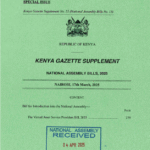China is testing cloud-seeding using a long-endurance dual-use drone in Xinjiang Uygur autonomous region. This marks the first instance of this technique being performed by an unmanned aerial vehicle in the arid western area. The trial involves the TB-A strike and reconnaissance drone, also known as the Twin-tailed Scorpion A. This groundbreaking initiative is aimed at addressing the issue of water scarcity.
Cloud seeding is a weather modification technique designed to enhance precipitation by dispersing substances into the atmosphere that encourage cloud condensation. In this test, the TB-A drone, traditionally tasked with carrying ammunition for military purposes, has been equipped with silver iodide rods for this 45-day cloud-seeding experiment, which commenced on Sunday.
The use of drones for cloud seeding offers several advantages over traditional methods. Drones provide greater precision and flexibility, allowing for targeted operations in areas that might be difficult to reach with manned aircraft. This can lead to more efficient and effective cloud seeding, potentially maximizing the amount of precipitation produced.
Benefits of Drone-Based Cloud Seeding
Increased efficiency
Drones can be deployed quickly and adjusted in real time to respond to changing weather conditions, optimizing the cloud-seeding process. Their ability to operate in harsh or inaccessible environments makes them an ideal tool for reaching remote areas where traditional aircraft might struggle.
Cost-Effectiveness
Compared to manned aircraft, drones are generally more cost-effective to operate. They require less maintenance and fuel, which can reduce the overall cost of cloud-seeding operations.
Precision and Safety
Drones offer precise control over the dispersion of seeding agents, which can enhance the effectiveness of the process. Additionally, using unmanned vehicles reduces the risks associated with piloted aircraft, especially in challenging or hazardous conditions.
Environmental Impact
By enhancing precipitation in drought-stricken areas, cloud seeding can help alleviate water shortages, support agriculture, and improve water resources. This has the potential to positively impact local ecosystems and communities dependent on these water sources.
The drone is currently operating in Hami, the easternmost city of the Xinjiang Uygur region, targeting the Dongtian mountain area. The test aims to assess the drone’s cloud-seeding effectiveness in high-altitude environments, as reported by Xinjiang Daily, a newspaper affiliated with the Communist Party. Hami, renowned for its sweet melons, is located in one of China’s driest regions and has been significantly affected by climate change, experiencing frequent droughts and elevated temperatures.
The TB-A drone, equipped with three engines compared to the two-engine TB-001, boasts an impressive maximum take-off weight of 3,250 kg (7,165 lbs), a 40-hour endurance, and an extended range of 8,000 km (4,971 miles). These specifications enhance its capability for long-duration and high-capacity operations, as reported by the manufacturer.
This cloud-seeding trial in Xinjiang is a first for the region, but the TB-A drone has previously been used for similar purposes elsewhere. In the summer of 2022, a TB-A was deployed to the Sichuan Basin to induce rain during a severe heatwave that had significantly impacted the Yangtze River. Additionally, in October of the previous year, Yunnan province conducted its inaugural cloud-seeding trial with the TB-A to address drought conditions resulting from reduced summer rainfall.
China has become a leader in cloud-seeding technology. However, this practice is not without controversy. Critics point to potential unintended consequences, such as increased pollution and excessive rainfall, and some scientists question the overall effectiveness of the technique. Despite these concerns, the ongoing trials and innovations are indicative of China’s commitment to exploring advanced methods for managing water resources and mitigating the impacts of climate change.
Prospects
The successful implementation of this drone-based cloud-seeding trial could pave the way for broader adoption of this technology in other regions facing similar challenges. As climate change continues to affect weather patterns and exacerbate water shortages, innovative approaches like drone cloud seeding could become increasingly important tools in managing water resources and supporting sustainable development.
However, critics raise concerns about the potential environmental impacts and the effectiveness of the technique. It remains essential to monitor and evaluate the outcomes of these trials to ensure that they achieve their intended goals without unintended consequences.
As China continues to explore and expand its use of drone technology for various applications, the results of this cloud-seeding trial will be closely watched. The potential benefits of increased precipitation and enhanced water management could play a crucial role in addressing the pressing challenges faced by arid and semi-arid regions worldwide.
ALSO READ: China launches ambitious Qianfan satellite internet constellation













